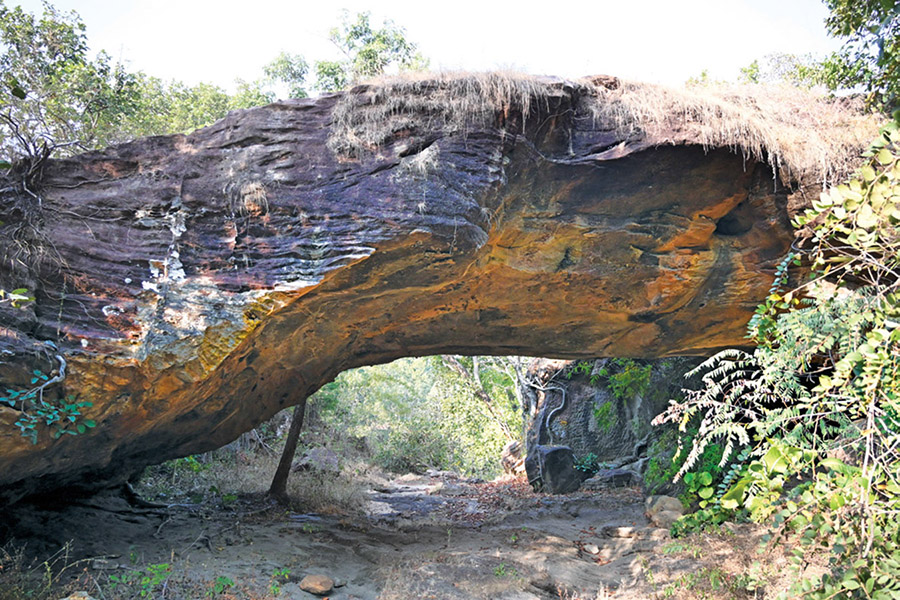| archaeology and landscape interpretation
CHOOSING A LOCALITY, CREATING A CAVE
BANDHAVGARH NATIONAL PARK AND TIGER RESERVE
Nayanjot Lahiri
LA83 |
|
| The article explores Bandhavgarh’s ancient Cave 12, revealing its historical, archaeological, and mythological significance through early inscriptions, prehistoric remnants, and evolving local names rooted in the Ramayana.
|
|
Landscapes in parts of India have enduring human markers stamped across rock surfaces. There are paintings and sculptural reliefs, there are words inscribed on stone, and there are parallel lines of hollow cupules that look like gaming boards. One such landscape can be encountered in the Bandhavgarh National Park and Tiger Reserve in Madhya Pradesh, where some 95 odd caves were created in the early centuries CE. The caves were created from the front to the back, by hollowing out solid rock, and of these, some 26 odd shelters were also inscribed with epigraphs. What the inscriptions say has figured fairly prominently in writings on Bandhavgarh which usually see them as linguistic artifacts for exploring the background of the cave donors and the range of structures they created.
|


|
|

|
|
|
|
|